DIY alarm
Everyone is concerned about their safety. You can ask the design and installation organization to make a project, and then install on it. But it is uninteresting and sticks into the budget. So consider the do-it-yourself alarm system. Security and fire alarms (OPS) and access control system (ACS) in the apartment and house (cottage) will be considered
In the beginning, you need to decide on the project. The project should be, if it is a public place, to which our house does not apply. But the sensor circuit, where and where it is connected, is desirable for future maintenance.
Now we decide on the tasks. The number of sensors and wires.
There are targeted and simple ones. Addressing is more convenient to use, but the conclusion is more expensive (usually a computer with appropriate software is used), so we make it simple.
To provide protection against false alarms, we put in at least two smoke tubes in each room, except for the bathroom and kitchen. No fire alarms are set in the bathroom, and flame detectors are made in the kitchen. Each detector controls an area of 5-10 square meters.
Consider a small example: if the room is 5 square meters, then there are two sensors, if 45 square meters then 5 sensors are evenly spaced around the room (the sensor has a radius of about 3.5 meters). Does not put a pair of handbrake (on each exit separately). Handbrake - the sensor is manual, you press the button and a fire alarm is triggered. This is necessary if something caught fire, and the alarm did not work, especially if you have an agreement with firefighters. Press the button faster, what to call and name the address, when you need to try to localize the fire and reduce losses.
Sensors work around the clock.
The power and loop control are on two wires. For example, VSWR 2x0.5. But I recommend to do all the same KPSEng-FRLS 1x2x0.5 or KPSEVng-FRLS 2x0.5 (well, or another similar one with the FRLS marking), which differ in that the second is a twisted pair.
FRLS cables, except for the certificate, are fire resistant. After all, if the fire started with cables, then the fire alarm may not work or will malfunction. Cables are 2-5 times more expensive, but they need not so many and this is done for several years (warranty period - 5 years).
FRLS is a must for firefighters.
The sensors are connected in series, the connection diagram is in any instruction (both to the sensors themselves and to the receiving devices).
We provide two protection circuits (requires SP). The first is the perimeter of the house or apartment, this includes doors and windows, the second internal - motion sensors. This is convenient if you live in a house, then you can turn on security sensors on the perimeter at night and sleep more calmly. It will be more correct to loop through the rooms so that it is clear in which room the alarm went off, but this way more loops are needed and this should be taken into account.
These sensors are considered already active and they need 12V power. Four wire wires are used, such as KSVV 4x0.5 and the like. You can use UTP 2x2x0.51.
Sensors are connected in series.
Everything is simple here, there should be no problems. The main thing is to follow some rules:
Wipe off the sensors from the sensors. Once every 3-4 months, check the performance of security sensors, test smoke tubes (they have a test button). Check the voltage at the power and battery terminals. Usually there are instructions on how to carry out maintenance.
It is better to use devices of one system, for example, a car or a boundary, i.e. sensors and control panel (PKP) of one firm. It is also advisable to use detectors of the same company, for example DSC and TECO.
You can open the site of the car or the border and see the typical schemes (general schemes wherever connected), but we will go the other way.
We put protection with the best traditions of American films.
We take the DSC company. At the entrance there will be a keyboard (in the house - in the vestibule, garage and separately in the bathhouse and other rooms), let's say LCD5501E. The device itself will be PC1864 and expanders for each additional PC5108 room. IR sensors (for motion) and sound are taken by the company TECO Astra-5A (or if there are animals Astra-511 or Astra-512, depending on weight) and Astra-S, respectively.
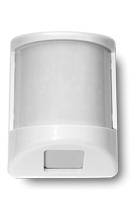

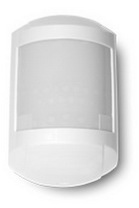

For the fire will be responsible VERS-PK1TM - with one cable with smoke chambers DIP-3SU (IP 212-3SU) and the handbrake IPR-55 from Irset-Center. In the house we use VERS-PK4-04 with four or VERS-PK8-02 with eight loops (for each building you need a separate loop and it is advisable to break it down by floors so that it is clear where to run and where to put out.


Do not forget about the resistors (resistance) at the end of the cables and at the smoke fans, which are needed to control the integrity of the cable. If the cable is cut off or there is a short circuit, the device will give a signal of malfunction.
It is better to place all the control panels in a metal box, for example, ShchMP-2-0.
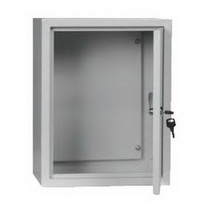
The siren siren will be engaged in the notification inside the building and outside the Thunder-12K. A pipe is a small “tweeter” that will definitely lift you out of bed, even if you sleep with your neighbors. This is not recommended to be installed in the apartment (or all neighbors need to be warned) or which is quieter, for example, TON-1C-12. A

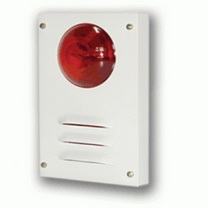
couple of emergency lights are needed to make it easier to navigate without electricity at night (they turned off the electricity - they turned on). Do not forget about the batteries in the control panel.
Then he calls the security company and puts them on guard. Security guards and technicians will come to check the equipment and say what is needed (buy a transmitter from them and a couple of relays, for example, UK / VK-02) and arm them.
Although it is better to call the company and ask about the equipment. It is advisable to choose a company that has a near post and has licenses for installation, maintenance and security, and security certificates and technicians.
Self defense.
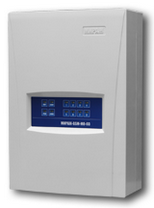
We put the Mirage-GSM-A4-03 firm NPO Stealth, which has 4 loops or Mirage-GSM-M8-03 with 8 loops. we stick two SIM cards in it, we configure it. We connect the sensors from the previous version. You can connect a siren. In case of an alarm, a siren will sound and an SMS will be sent (or a voice robot will inform) what worked and where. They agreed in the bank and handed over the phone to the security organization, when they arrived, they arrived. As a result, the director of the bank, the SB of the bank and the security company knew that the alarm had triggered.
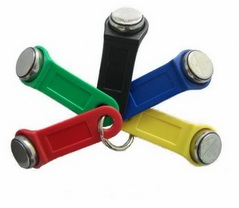
Fire loops work around the clock, and is armed with an electronic key.
It is not difficult to do on your own from beginning to end. It costs money to order a project (and it will come out as the alarm itself), working documentation will come out cheaper (schemes and connections are made). Installation will also increase the cost of the system by almost two, and if you are not confident in your abilities and, moreover, you did not hold a drill and a perforator in your hands, then it is better not to do it yourself. Security is a responsible matter, and if you work side by side, you can protect your home yourself, like a real man.
But let's face it. If you have a familiar designer of an OPS or you find it in the design organization with a scaffold (some bosses, and the designers themselves take it). It is better to order at least working documentation, as a result, you will be selected equipment, its placement and a list of materials. Installation in this case is not difficult to do.
It is better to put on guard. After all, if they rob (well, anything can happen), then they must compensate for the damage if you set it on guard when leaving, but you must carefully read the contract in any case. It says who is to blame and who will indemnify.
Some security companies have fire fighting licenses, this will be a big plus. After all, after the fire alarm is triggered, you must call yourself at 03, or register in a contract with a security company so that they call when there is an alarm.
Abbreviations:
OPS - security and fire alarm
ACS - access control control system (intercom, electric locks)
Sensor (in the text) - fire or security announcer
Smokers are a fire detector that responds to smoke, but can give false alarms to dust, in the bathroom and in the kitchen, due to steam, they can trigger.
Flame sensors - a fire detector that responds to a flame.
Handbrake - manual fire detector or IPR, you press the button and a fire alarm is triggered.
A receiving device (in the text) or a control panel (PKP) is a device that monitors the status of loops and issues an alarm.
IR sensor - detector, optical-electronic, volumetric, responsive to movement.
SMK - magnetic magnetic detector, responsive to the distance of the magnet from the reed switch, placed on the door.
Sound - a sound alarm detector, usually reacts to glass breaking.
PS Moderators can transfer to the desired section.
PS2. If you have questions or comments, I will answer.
PS3 I can make an example project (documentation) if I need someone and provide
PS4 schemes . "Style of presentation as a caveman" (c) slaum - if you specify where stylistic errors and how to fix I will be very grateful. Better in PM.
Article posted here
Design
In the beginning, you need to decide on the project. The project should be, if it is a public place, to which our house does not apply. But the sensor circuit, where and where it is connected, is desirable for future maintenance.
Now we decide on the tasks. The number of sensors and wires.
Fire loops
There are targeted and simple ones. Addressing is more convenient to use, but the conclusion is more expensive (usually a computer with appropriate software is used), so we make it simple.
To provide protection against false alarms, we put in at least two smoke tubes in each room, except for the bathroom and kitchen. No fire alarms are set in the bathroom, and flame detectors are made in the kitchen. Each detector controls an area of 5-10 square meters.
Consider a small example: if the room is 5 square meters, then there are two sensors, if 45 square meters then 5 sensors are evenly spaced around the room (the sensor has a radius of about 3.5 meters). Does not put a pair of handbrake (on each exit separately). Handbrake - the sensor is manual, you press the button and a fire alarm is triggered. This is necessary if something caught fire, and the alarm did not work, especially if you have an agreement with firefighters. Press the button faster, what to call and name the address, when you need to try to localize the fire and reduce losses.
Sensors work around the clock.
Wires
The power and loop control are on two wires. For example, VSWR 2x0.5. But I recommend to do all the same KPSEng-FRLS 1x2x0.5 or KPSEVng-FRLS 2x0.5 (well, or another similar one with the FRLS marking), which differ in that the second is a twisted pair.
FRLS cables, except for the certificate, are fire resistant. After all, if the fire started with cables, then the fire alarm may not work or will malfunction. Cables are 2-5 times more expensive, but they need not so many and this is done for several years (warranty period - 5 years).
FRLS is a must for firefighters.
Connection
The sensors are connected in series, the connection diagram is in any instruction (both to the sensors themselves and to the receiving devices).
Security Loops
We provide two protection circuits (requires SP). The first is the perimeter of the house or apartment, this includes doors and windows, the second internal - motion sensors. This is convenient if you live in a house, then you can turn on security sensors on the perimeter at night and sleep more calmly. It will be more correct to loop through the rooms so that it is clear in which room the alarm went off, but this way more loops are needed and this should be taken into account.
Wires
These sensors are considered already active and they need 12V power. Four wire wires are used, such as KSVV 4x0.5 and the like. You can use UTP 2x2x0.51.
Connection
Sensors are connected in series.
Mounting
Everything is simple here, there should be no problems. The main thing is to follow some rules:
- Wires away from power (220V).
- Through the wall additionally in the cambric.
- The instructions for the sensors have tips for placement and connection.
Service
Wipe off the sensors from the sensors. Once every 3-4 months, check the performance of security sensors, test smoke tubes (they have a test button). Check the voltage at the power and battery terminals. Usually there are instructions on how to carry out maintenance.
Devices
It is better to use devices of one system, for example, a car or a boundary, i.e. sensors and control panel (PKP) of one firm. It is also advisable to use detectors of the same company, for example DSC and TECO.
You can open the site of the car or the border and see the typical schemes (general schemes wherever connected), but we will go the other way.
Option 1
We put protection with the best traditions of American films.
We take the DSC company. At the entrance there will be a keyboard (in the house - in the vestibule, garage and separately in the bathhouse and other rooms), let's say LCD5501E. The device itself will be PC1864 and expanders for each additional PC5108 room. IR sensors (for motion) and sound are taken by the company TECO Astra-5A (or if there are animals Astra-511 or Astra-512, depending on weight) and Astra-S, respectively.




For the fire will be responsible VERS-PK1TM - with one cable with smoke chambers DIP-3SU (IP 212-3SU) and the handbrake IPR-55 from Irset-Center. In the house we use VERS-PK4-04 with four or VERS-PK8-02 with eight loops (for each building you need a separate loop and it is advisable to break it down by floors so that it is clear where to run and where to put out.


Do not forget about the resistors (resistance) at the end of the cables and at the smoke fans, which are needed to control the integrity of the cable. If the cable is cut off or there is a short circuit, the device will give a signal of malfunction.
It is better to place all the control panels in a metal box, for example, ShchMP-2-0.

The siren siren will be engaged in the notification inside the building and outside the Thunder-12K. A pipe is a small “tweeter” that will definitely lift you out of bed, even if you sleep with your neighbors. This is not recommended to be installed in the apartment (or all neighbors need to be warned) or which is quieter, for example, TON-1C-12. A


couple of emergency lights are needed to make it easier to navigate without electricity at night (they turned off the electricity - they turned on). Do not forget about the batteries in the control panel.
Then he calls the security company and puts them on guard. Security guards and technicians will come to check the equipment and say what is needed (buy a transmitter from them and a couple of relays, for example, UK / VK-02) and arm them.
Although it is better to call the company and ask about the equipment. It is advisable to choose a company that has a near post and has licenses for installation, maintenance and security, and security certificates and technicians.
Option 2
Self defense.

We put the Mirage-GSM-A4-03 firm NPO Stealth, which has 4 loops or Mirage-GSM-M8-03 with 8 loops. we stick two SIM cards in it, we configure it. We connect the sensors from the previous version. You can connect a siren. In case of an alarm, a siren will sound and an SMS will be sent (or a voice robot will inform) what worked and where. They agreed in the bank and handed over the phone to the security organization, when they arrived, they arrived. As a result, the director of the bank, the SB of the bank and the security company knew that the alarm had triggered.

Fire loops work around the clock, and is armed with an electronic key.
conclusions
It is not difficult to do on your own from beginning to end. It costs money to order a project (and it will come out as the alarm itself), working documentation will come out cheaper (schemes and connections are made). Installation will also increase the cost of the system by almost two, and if you are not confident in your abilities and, moreover, you did not hold a drill and a perforator in your hands, then it is better not to do it yourself. Security is a responsible matter, and if you work side by side, you can protect your home yourself, like a real man.
But let's face it. If you have a familiar designer of an OPS or you find it in the design organization with a scaffold (some bosses, and the designers themselves take it). It is better to order at least working documentation, as a result, you will be selected equipment, its placement and a list of materials. Installation in this case is not difficult to do.
It is better to put on guard. After all, if they rob (well, anything can happen), then they must compensate for the damage if you set it on guard when leaving, but you must carefully read the contract in any case. It says who is to blame and who will indemnify.
Some security companies have fire fighting licenses, this will be a big plus. After all, after the fire alarm is triggered, you must call yourself at 03, or register in a contract with a security company so that they call when there is an alarm.
Abbreviations:
OPS - security and fire alarm
ACS - access control control system (intercom, electric locks)
Sensor (in the text) - fire or security announcer
Smokers are a fire detector that responds to smoke, but can give false alarms to dust, in the bathroom and in the kitchen, due to steam, they can trigger.
Flame sensors - a fire detector that responds to a flame.
Handbrake - manual fire detector or IPR, you press the button and a fire alarm is triggered.
A receiving device (in the text) or a control panel (PKP) is a device that monitors the status of loops and issues an alarm.
IR sensor - detector, optical-electronic, volumetric, responsive to movement.
SMK - magnetic magnetic detector, responsive to the distance of the magnet from the reed switch, placed on the door.
Sound - a sound alarm detector, usually reacts to glass breaking.
PS Moderators can transfer to the desired section.
PS2. If you have questions or comments, I will answer.
PS3 I can make an example project (documentation) if I need someone and provide
PS4 schemes . "Style of presentation as a caveman" (c) slaum - if you specify where stylistic errors and how to fix I will be very grateful. Better in PM.
Article posted here
